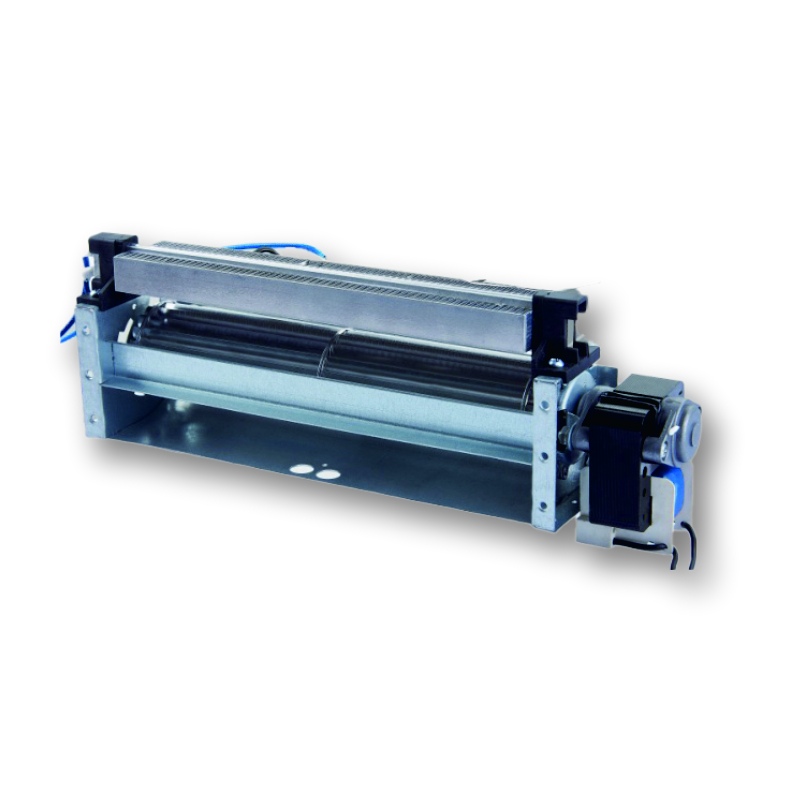Introduction to shaded pole fan motors
Shaded pole fan motors are a common type of AC electric motor, recognized for their simplicity and cost-effectiveness. These motors are widely used in household applications, such as fans, blowers, and small appliances. Despite their prevalence, their suitability for high-performance applications is often questioned. Understanding the design and operational characteristics of shaded pole motors is crucial for determining their potential usage in more demanding scenarios.
Advantages of Shaded Pole Motors
Design Simplicity
One of the most notable advantages of shaded pole motors is their simple design. The motor comprises a stator with shaded poles and a rotor that spins due to the magnetic field produced by alternating current. This straightforward design contributes to their low manufacturing cost, making them a popular choice for manufacturers and suppliers seeking economical solutions.
Cost Efficiency
Shaded pole motors are among the least expensive motors in terms of production costs. Their economical nature makes them attractive for wholesale distribution, especially for applications where budget constraints are significant. Furthermore, their reliability in low-demand applications adds to their cost-effectiveness, as maintenance and replacement costs are minimal.
Limitations of Shaded Pole Motors
Low Efficiency
Shaded pole motors typically exhibit low efficiency, often around 26%. This inefficiency results from the single-phase design and the inherent energy losses associated with the shading coils. Consequently, shaded pole motors consume more electricity for the same output when compared to other types of motors, making them less suitable for high-performance applications.
Limited Torque and Power Output
The design of shaded pole motors results in limited torque and power output. These motors are generally produced with power ratings below 50 watts. Such limited capacity makes them incapable of driving heavy loads or sustaining operations that demand high power or torque, restricting their use to lighter applications.
Comparison with Other Motor Types
Shaded Pole vs. Induction Motors
Compared to induction motors, shaded pole motors provide less torque and efficiency. Induction motors, often used for higher-power applications, incorporate additional components like capacitors and start switches, which enhance their performance capabilities. Suppliers and manufacturers targeting high-performance markets typically favor induction motors over shaded pole designs.
Shaded Pole vs. Brushless DC Motors
Brushless DC motors are another alternative that offers superior performance characteristics, including higher efficiency and torque. Unlike shaded pole motors, they use a permanent magnet and electronic commutation, which significantly improves their operational capabilities. Consequently, when high performance is required, brushless DC motors are often the preferred choice.
Ideal Applications for Shaded Pole Motors
Low-Power Household Appliances
Shaded pole motors excel in applications where low power and torque are sufficient. Common uses include small fans, bathroom exhaust units, and appliance motors. In such contexts, the simplicity and cost advantages of shaded pole motors ensure they remain a popular choice for manufacturers and suppliers.
Limited Mechanical Load Devices
Due to their low starting torque, shaded pole motors are suitable for driving devices with limited mechanical loads. They are effective in applications where ease of start-up and minimal operational demands are critical, making them ideal for specific low-demand consumer goods.
Technical Features and Design Aspects
Shaded Pole Motor Construction
The primary design feature of a shaded pole motor is the shading coil—a single-turn copper ring around part of each stator pole. This coil creates a secondary, out-of-phase magnetic field, which imparts rotation to the rotor. Such a design is cost-efficient but inherently limits performance metrics such as power factor and torque.
Speed Control and Operation
Shaded pole motors can operate at variable speeds, controlled through multi-tapped windings or external controllers like TRIACs. However, the speed range is limited due to the motor’s construction, restricting their suitability for applications requiring precise speed adjustments.
Innovations and Enhancements in Design
Advancements in Materials
Recent innovations in materials used for manufacturing shaded pole motors have led to marginal improvements in efficiency and performance. By employing higher-grade steel for rotor construction and optimizing the design of the shading coil, manufacturers attempt to enhance the motor’s capabilities, though improvements are modest.
Integration with Modern Control Systems
The integration of shaded pole motors with advanced electronic control systems provides a method to slightly boost their performance. Such systems can enable more efficient speed regulation and reduce energy consumption in low-demand applications, though these advancements still do not address inherent limitations in torque and power output.
High-Performance Application Requirements
Demand for Efficiency and Torque
High-performance applications require motors that provide both high efficiency and significant torque. This demand is driven by the needs of industrial and commercial sectors, where energy efficiency directly correlates to operational costs and environmental considerations.
Operational Reliability and Longevity
For applications that require continuous operation, reliability and longevity are critical. Shaded pole motors, due to their basic design, may not withstand the rigorous operational demands of high-performance environments, pointing to the necessity of more robust motor designs.
Alternatives for High-Performance Applications
Industrial Induction Motors
- Higher torque and efficiency than shaded pole motors
- Suitable for heavy-duty applications
- Commonly available from industrial motor suppliers
Brushless DC Motors
- Offer greater efficiency and performance
- Used in applications requiring precision and reliability
- Typically supported by advanced electronic controls
Conclusion: Suitability and Recommendations
In conclusion, shaded pole motors are excellent for applications that benefit from their simplicity and cost-effectiveness, especially where low power and limited torque are sufficient. However, for high-performance applications that require higher torque, efficiency, and reliability, alternative motor types such as induction and brushless DC motors are recommended. Suppliers and manufacturers should consider these variables when selecting motors for demanding environments.
Hanlang Technology Provide Solutions
Hanlang Technology specializes in offering comprehensive motor solutions tailored to meet a wide range of application needs. Our expertise extends to providing cutting-edge brushless DC motors and high-efficiency induction motors that cater to industrial, commercial, and high-performance uses. As a distinguished supplier and manufacturer, Hanlang Technology is committed to delivering superior products, ensuring efficiency and reliability. Our solutions are designed to optimize performance and meet the specific demands of diverse markets globally.




